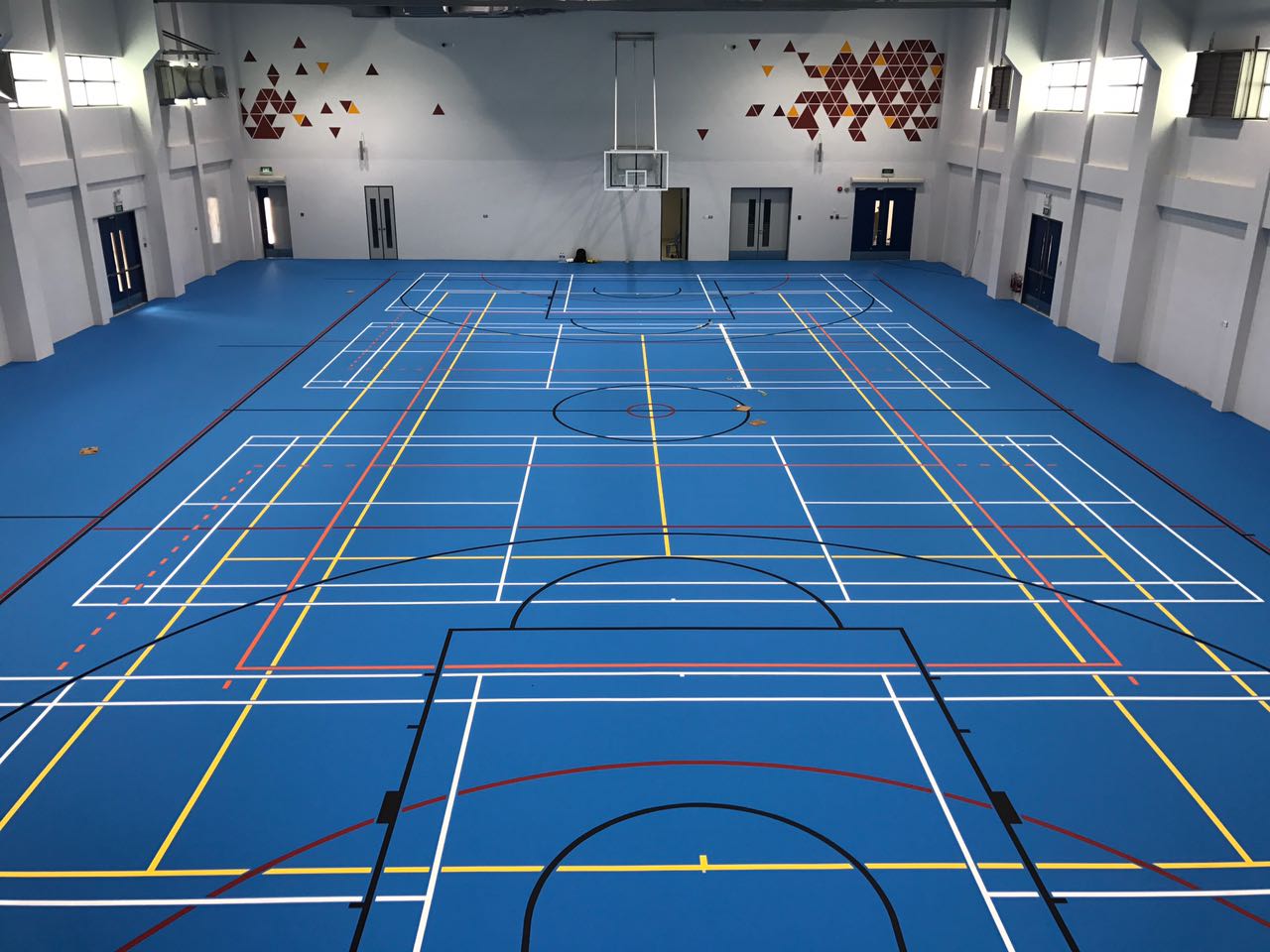Polyurethane flooring, with its high flexibility and elasticity and good light resistance, is an unrivaled coating in environments with surface tension, and also sports and non-roofed environments.
Urethanes are obtained in an addition reaction of polyols and polyisocyanates. Isocyanates act as hardeners. Considering that there are all kinds of polyol resins and all kinds of polyisocyanate hardeners, so by combining them it is possible to obtain a variety of coatings based on polyurethane resins, which will naturally have a variety of properties. By using various kinds of fillers, additives and plastics, major changes can be made in polyurethanes, or in other words, their properties can be improved.
Advantages of Polyurethane Flooring
- Significant flexibility and pressure removal of the floor structure due to its expansion and contraction, which ultimately prevents the creation of possible cracks.
- Significant resistance to line formation and surface roughness due to making use.
- Reducing the consequences of collisions of objects or athletes and preventing possible injuries
- Resistance and preservation of the color structure of the flooring exposed to sunlight UV
Applications of Polyurethane Flooring
Polyurethanes can be used as a floor covering or a coating to make the building floors that we walk on every day more durable, easier to maintain, and more beautiful and attractive. Polyurethane is used for building floor coverings, from mosaics and stone to cement. This protective layer is resistant to wear and solvents and is easy to clean. In fact, with the help of polyurethane flooring, an old surface can be modified to look fresh again.
In addition, polyurethane flooring is an ideal flooring that is not damaged by sunlight! It is not suitable to implement ordinary epoxy flooring in an environment that is exposed to sunlight; because sunlight causes yellowing of the coating and it also makes the coating plastered.
Polyurethane flooring is an aliphatic polyurethane coating suitable for surface protection in the outdoor environment. The elastic properties of polyurethane make it an ideal solution to prevent cracking and achieve a waterproof coating in various applications.
The chemical composition of polyurethane coating has made it suitable for use in busy and high-traffic areas.

Types of Polyurethane Flooring
Industrial polyurethane flooring: This flooring is suitable for industrial environments, parking lots, and so on, that in addition to resisting rustling, it also repels the movements of the building that causes cracks in the foundation.
Sports polyurethane flooring: with significant flexibility and high thickness, it helps prevent athletes from getting injured.
UV polyurethane flooring: This flooring is designed for non-roofed environments exposed to sunlight and has a significant lifespan.
Advantages of UV Polyurethane Flooring
UV polyurethane floorings have unique advantages for use in a non-roofed environment, including the following:
- UV Stability
Polyurethanes have high UV resistance. This coating is suitable for use in outdoor environments and does not change color. When polyurethane is used as the final coating (colorless lacquer) on the epoxy layer, it protects the epoxy from yellowing over time.
- Resistance to Chemicals:
Polyurethanes are resistant to a wide range and various concentrations of chemicals.
- Increasing Impact and Wear Resistance:
Polyurethanes exhibit excellent impact and wear resistance, and last up to four times longer than epoxy flooring.
- Top Layer:
The final layer or polyurethane top can be matte, semi-glossy or shiny. A variety of desired and safety additives can also be added to the top resin and the desired properties can be obtained.
Sports hall polyurethane flooring

The three best and distinguishing features of polyurethane resins are:
- Good Bonding to Concrete
Polyurethanes have an excellent mechanical bonding to the concrete surface, provided that the concrete substrate is properly prepared for coating and the concrete curing time is completely done and there is no moisture in the concrete itself or the layers below the concrete. This basic system (including primer and middle layer) provides a suitable substrate for the implementation and adhesion of the final layer or top. The set of this three-layer coating system has a good bond just as much as the adhesion of the primary layer to the concrete substrate. Of course, the preparation of the concrete surface and proper foundation is an important part of establishing strong bonding and adhesion. It is recommended to prepare concrete with mechanical tools and methods such as sanding and abrasion foam or with the help of diamond stones.
- Thickness
Normally, polyurethane coatings give us a thickness between 1 and 4 mm at each execution, which depends on the density of the polyurethane resin. This thickness gives the polyurethane layer the opportunity to chemically bond with the primer, it is also thick enough to level the entire layer and fill the small voids and small cracks in the concrete. More layers may be required depending on the intended application and concrete conditions. Once installed, polyurethane flooring provides a hard and durable surface. (In polyurethane sports hall floorings, these thicknesses increase.)
- Implementation and Performance
Once installed, polyurethane flooring provides a hard and durable surface that has good impact resistance. Polyurethane coating is easy to implement, does not take much time to do the job, and is relatively affordable compared to other industrial floorings.
To implement a polyurethane coating, the quality and preparation of the underwork surfaces is very important. Concrete and carbon steel surfaces must have the necessary conditions for coating. The humidity in concrete should be less than 4%. The surfaces under the concrete work must be free of voids. Porosity and voids can be filled using a levelling coating containing mineral filler.
Implementation of Polyurethane Flooring
A typical two-component polyurethane flooring contains a resin component and a hardener component. The two components are thoroughly mixed together and then applied to the concrete floor. After application, the mixture is left to cure for a certain amount of time. There are different types of polyurethane coating to achieve optimal performance, which include flexible to chemical resistant polyurethanes, etc.
To inquire about the pricing for polyurethane flooring, please contact us at Aria Sath Tehran by calling +982166555592 to 4 and selecting extension 42.


Leave a Reply